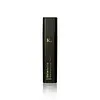What's inside
What's inside
 Key Ingredients
Key Ingredients

 Benefits
Benefits

 Ingredients Side-by-side
Ingredients Side-by-side

Water
Skin ConditioningButylene Glycol
HumectantGlycerin
HumectantCyclopentasiloxane
EmollientCaprylyl Glycol
EmollientSodium Acrylates/Beheneth-25 Methacrylate Crosspolymer
Skin ConditioningVitis Vinifera Seed Extract
AntimicrobialTocopheryl Acetate
AntioxidantSodium Ascorbyl Phosphate
AntioxidantGlutathione
Centella Asiatica Extract
CleansingHelianthus Annuus Seed Oil
EmollientSqualane
EmollientPanthenol
Skin ConditioningCopper Tripeptide-1
Skin ConditioningSodium Carboxymethyl Beta-Glucan
CleansingCeramide EOP
Skin ConditioningCeramide Ns
Skin ConditioningCeramide NP
Skin ConditioningCeramide As
Skin ConditioningCeramide AP
Skin ConditioningGlyceryl Diisostearate/Hydrogenated Rosinate
Skin ConditioningMethylpropanediol
SolventDidecyldimonium Chloride
EmulsifyingPolyquaternium-80
CleansingHydroxypropyl Methylcellulose
Emulsion StabilisingEDTA
Water, Butylene Glycol, Glycerin, Cyclopentasiloxane, Caprylyl Glycol, Sodium Acrylates/Beheneth-25 Methacrylate Crosspolymer, Vitis Vinifera Seed Extract, Tocopheryl Acetate, Sodium Ascorbyl Phosphate, Glutathione, Centella Asiatica Extract, Helianthus Annuus Seed Oil, Squalane, Panthenol, Copper Tripeptide-1, Sodium Carboxymethyl Beta-Glucan, Ceramide EOP, Ceramide Ns, Ceramide NP, Ceramide As, Ceramide AP, Glyceryl Diisostearate/Hydrogenated Rosinate, Methylpropanediol, Didecyldimonium Chloride, Polyquaternium-80, Hydroxypropyl Methylcellulose, EDTA
Water
Skin ConditioningButylene Glycol
HumectantGlycerin
HumectantTrehalose
HumectantChamomilla Recutita Flower Extract
MaskingHydrolyzed Sclerotium Gum
HumectantPhenoxyethanol
PreservativeRosa Damascena Flower Extract
MaskingArtemisia Dracunculus Leaf/Stem Extract
MaskingXanthan Gum
EmulsifyingSodium Hyaluronate
HumectantChondrus Crispus Extract
Skin ConditioningHydroxypropyltrimonium Hyaluronate
Hydrolyzed Hyaluronic Acid
HumectantSodium Acetylated Hyaluronate
HumectantSodium Hyaluronate Crosspolymer
HumectantHydrolyzed Sodium Hyaluronate
Skin ConditioningPotassium Hyaluronate
Skin ConditioningCaprylyl Glycol
Emollient1,2-Hexanediol
Skin ConditioningCaprylic/Capric Triglyceride
MaskingHydrogenated Lecithin
EmulsifyingGlucose
HumectantArginine
MaskingHydroxypropyl Methylcellulose
Emulsion StabilisingCitric Acid
BufferingCI 77220
Cosmetic ColorantAcetyl Glucosamine
Skin ConditioningAscorbic Acid
AntioxidantGlutathione
Ethylhexylglycerin
Skin ConditioningSodium Polyacryloyldimethyl Taurate
Emulsion StabilisingSodium Polyacrylate
AbsorbentHouttuynia Cordata Extract
Skin ConditioningWater, Butylene Glycol, Glycerin, Trehalose, Chamomilla Recutita Flower Extract, Hydrolyzed Sclerotium Gum, Phenoxyethanol, Rosa Damascena Flower Extract, Artemisia Dracunculus Leaf/Stem Extract, Xanthan Gum, Sodium Hyaluronate, Chondrus Crispus Extract, Hydroxypropyltrimonium Hyaluronate, Hydrolyzed Hyaluronic Acid, Sodium Acetylated Hyaluronate, Sodium Hyaluronate Crosspolymer, Hydrolyzed Sodium Hyaluronate, Potassium Hyaluronate, Caprylyl Glycol, 1,2-Hexanediol, Caprylic/Capric Triglyceride, Hydrogenated Lecithin, Glucose, Arginine, Hydroxypropyl Methylcellulose, Citric Acid, CI 77220, Acetyl Glucosamine, Ascorbic Acid, Glutathione, Ethylhexylglycerin, Sodium Polyacryloyldimethyl Taurate, Sodium Polyacrylate, Houttuynia Cordata Extract
Ingredients Explained
These ingredients are found in both products.
Ingredients higher up in an ingredient list are typically present in a larger amount.
Butylene Glycol (or BG) is used within cosmetic products for a few different reasons:
Overall, Butylene Glycol is a safe and well-rounded ingredient that works well with other ingredients.
Though this ingredient works well with most skin types, some people with sensitive skin may experience a reaction such as allergic rashes, closed comedones, or itchiness.
Learn more about Butylene GlycolCaprylyl Glycol is a humectant and emollient, meaning it attracts and preserves moisture.
It is a common ingredient in many products, especially those designed to hydrate skin. The primary benefits are retaining moisture, skin softening, and promoting a healthy skin barrier.
Though Caprylyl Glycol is an alcohol derived from fatty acids, it is not the kind that can dry out skin.
This ingredient is also used as a preservative to extend the life of products. It has slight antimicrobial properties.
Learn more about Caprylyl GlycolGlutathione is an antioxidant naturally found in our bodies. It is made up of three amino acids: glycine, cysteine, and glutamic acid.
As an antioxidant, it prevents oxidative damage to parts of our cell.
While glutathione is said to help with fading dark spots, the results from research are inconclusive. Further studies are needed. With that said, gluthatione has been shown to protect our skin from UV-B induced damage.
This ingredient is naturally occurring in plants, animals, fungi, and some bacteria.
Learn more about GlutathioneGlycerin is already naturally found in your skin. It helps moisturize and protect your skin.
A study from 2016 found glycerin to be more effective as a humectant than AHAs and hyaluronic acid.
As a humectant, it helps the skin stay hydrated by pulling moisture to your skin. The low molecular weight of glycerin allows it to pull moisture into the deeper layers of your skin.
Hydrated skin improves your skin barrier; Your skin barrier helps protect against irritants and bacteria.
Glycerin has also been found to have antimicrobial and antiviral properties. Due to these properties, glycerin is often used in wound and burn treatments.
In cosmetics, glycerin is usually derived from plants such as soybean or palm. However, it can also be sourced from animals, such as tallow or animal fat.
This ingredient is organic, colorless, odorless, and non-toxic.
Glycerin is the name for this ingredient in American English. British English uses Glycerol/Glycerine.
Learn more about GlycerinThis ingredient is a semi-synthetic polymer created from cellulose. In case you need a refresher, cellulose is the main component of plant cell walls.
Hydroxypropyl Methylcellulose has many uses:
- emulsifier
- create a gel-like texture
- boost foam
Water. It's the most common cosmetic ingredient of all. You'll usually see it at the top of ingredient lists, meaning that it makes up the largest part of the product.
So why is it so popular? Water most often acts as a solvent - this means that it helps dissolve other ingredients into the formulation.
You'll also recognize water as that liquid we all need to stay alive. If you see this, drink a glass of water. Stay hydrated!
Learn more about Water